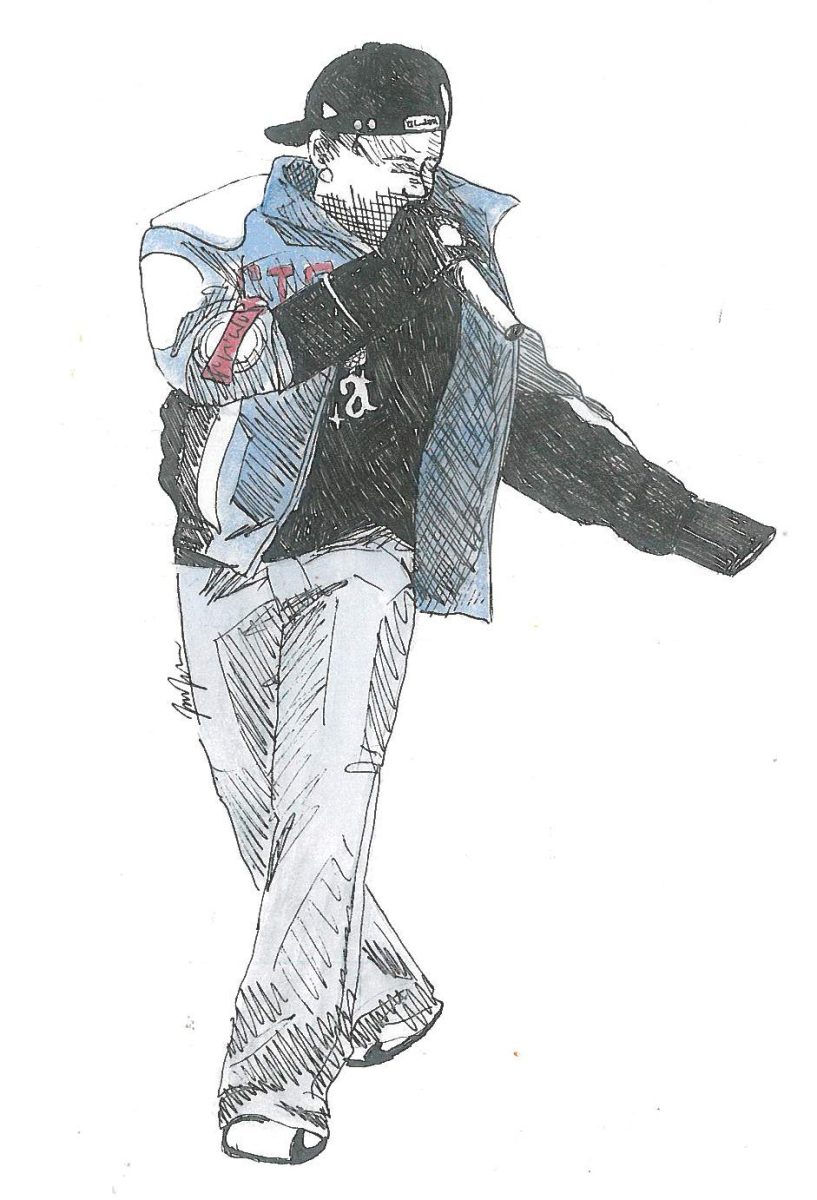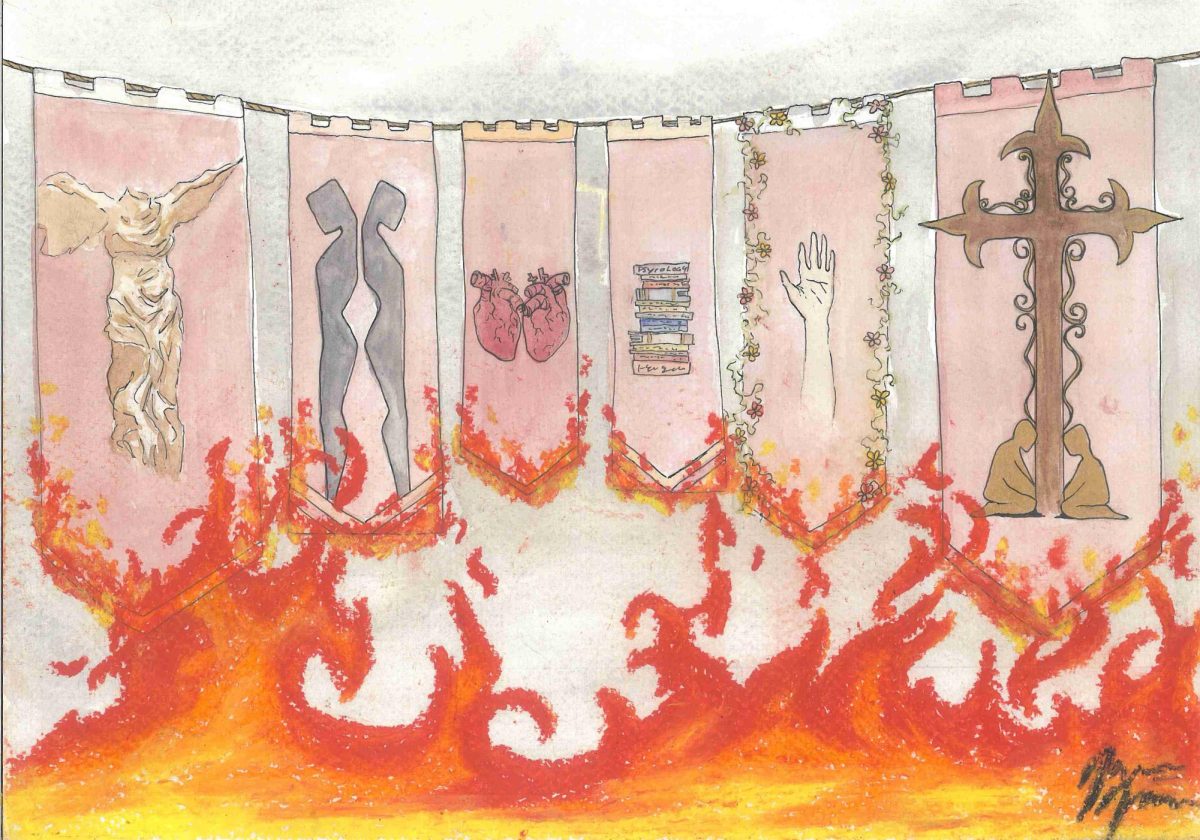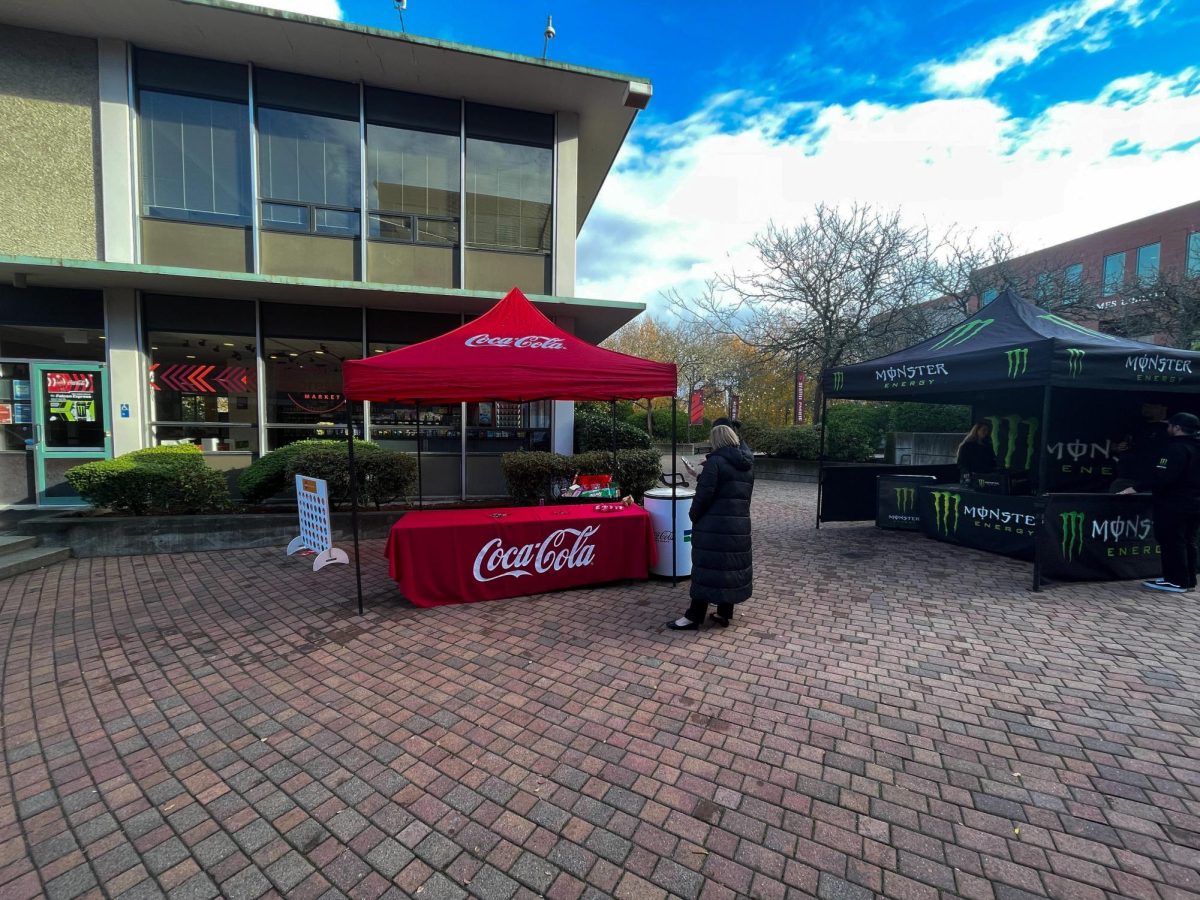Campus affected
According to the most recent reports from the Seattle Fire Department, the fire near the Shipping Canal on Saturday, November 10th has been deemed intentional and therefore ruled as arson.
Until the reports on November 13th, students had no idea what may have started the fire that caused the residence halls to unexpectedly lose power and eventually evacuate late Saturday night. When residents of Seattle Pacific University’s Hill Hall rushed outside in response to frantic texts and gasps heard from outside their open windows on the early evening of Nov. 10, they were shocked. What they thought would be a small, tame fire was much larger than they had realized.
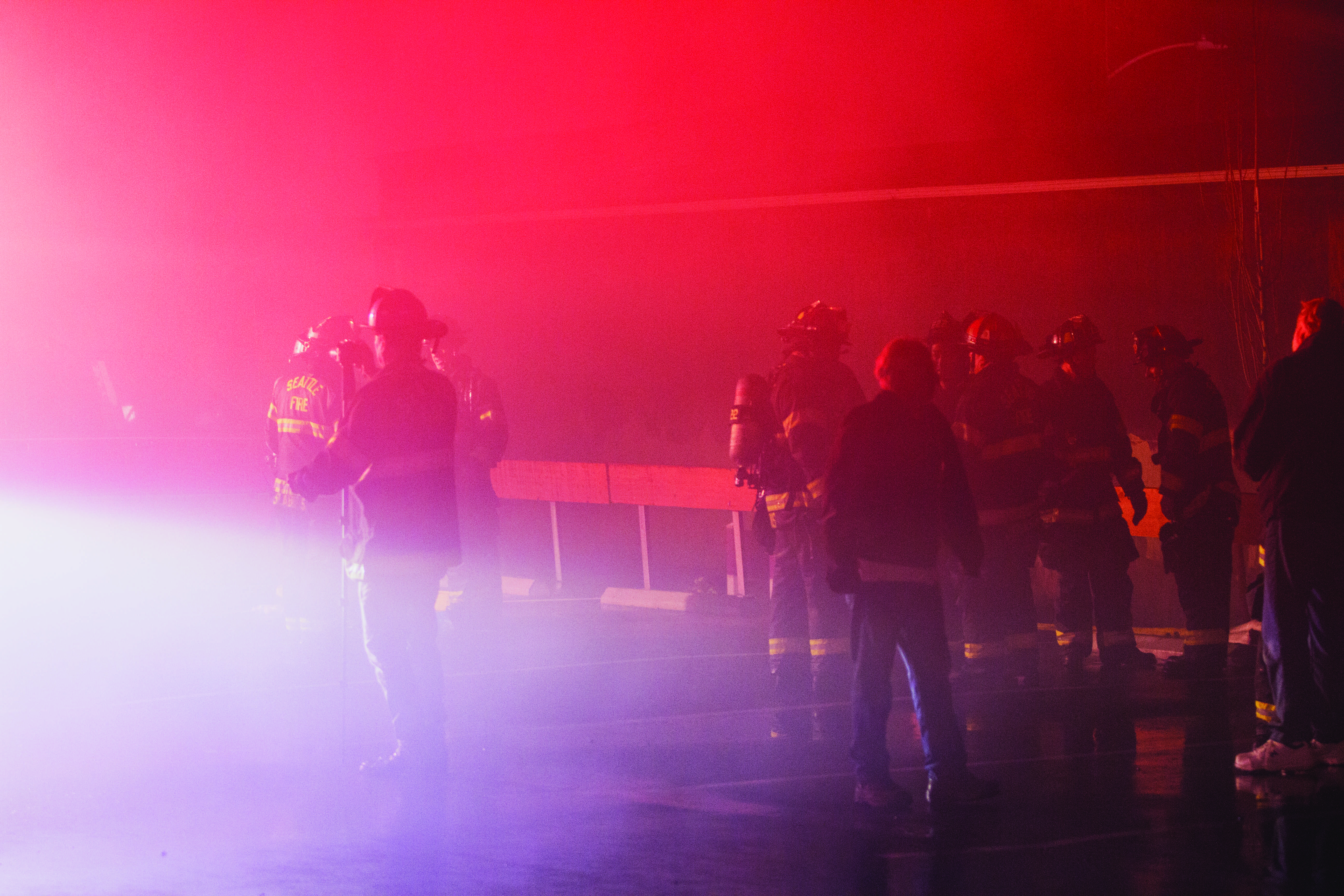
As they looked down the hill towards Emerson Hall and the familiar view of North Queen Anne, they saw instead a huge cloud of black and orange smoke.
“From our perspective as we ran from Hill Hall, it looked like Emerson was on fire, but thankfully when we got closer it was just beyond SPU boundaries. The ash and smoke almost completely covered the sky, it was honestly kind of terrifying,” Hill resident Samuel Winters said.
The fire, which started on the south side of the canal, affected five buildings in total. According to the Seattle Fire Department, one building collapsed under the destruction caused by the fire. The Seattle Times reports that “department spokeswoman Kristin Tinsley said the affected buildings belong to Northwest Millwork and Gascoigne Lumber.”
While the cause was unknown for a few days, as of November 13th the fire has been deemed an arson.
As the buildings contained mostly lumber, they were unfortunately perfect kindling for the fire to grow at a rapid rate and maintain its size for hours. By 10:30 p.m., the fire had been contained but still burned bright in one building.
At SPU, the fire affected power and shut off the lights to many campus buildings around 9:30 p.m. This power outage, in addition to the worsening air quality due to the smoke, caused most dorms to evacuate.
Emerson, being the closest to the dangerous fire and the clouds of smoke, evacuated first.
They were quickly followed by several other buildings, such as Hill and Arnett.
Josh Rogers, an Arnett resident, was with his Emerson resident girlfriend Kara Rehms at the time that the fire started. As soon as they received texts from friends about the fire, they ran to Emerson to collect Rehm’s things in case they needed to evacuate.
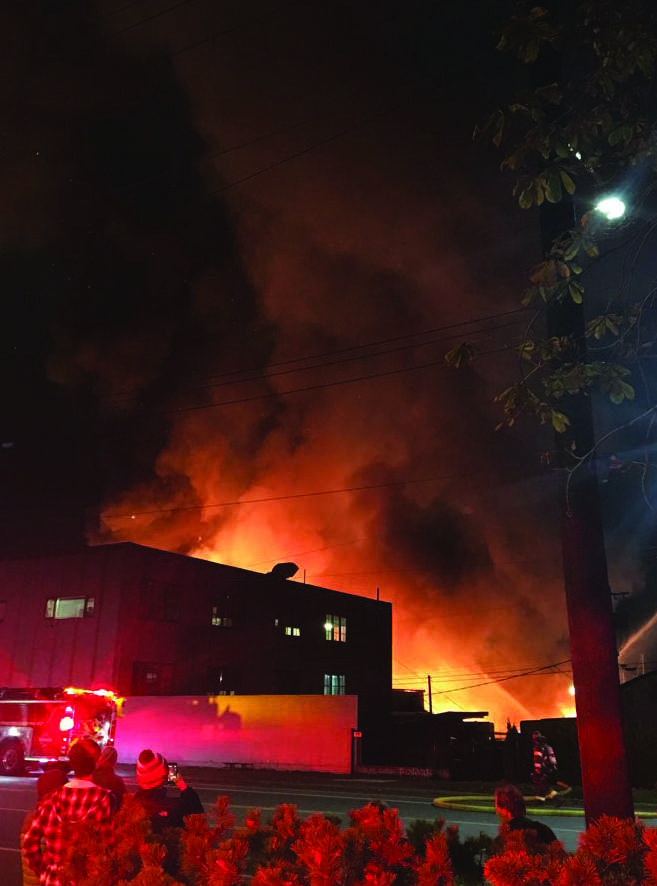
“It was actually quite frightening, when we first heard about it we just ran down the hall and outside. It was crazy, there were ashes everywhere and the flames were like 60 feet high,” Rogers said.
According to the Seattle Fire Department, the four-alarm fire had flames between 50 and 75 feet high at certain points.
“We were really worried about Emerson catching on fire,” Rehms explained, “because the sparks were … falling everywhere, and it was so close.”
Soon after, Emerson residents was evacuated to Gwinn Commons.
Rogers and Rehms both remember a lack of communication during the evacuation. They were not sure for a while where they were supposed to go, or if they were evacuating at all. According to Rehms, it was mostly word-of-mouth communication.
“They were supposed to send us to Marston-Watson, but then all of a sudden it changed. We weren’t even sure we were evacuating for the longest time,” Rehms said.
The pair decided to go to Tacoma to stay with Josh’s family for the evening, and wait out the evacuations there.
“I feel like realizing how unprepared the school was [for this situation] was what made us want to leave even more. It was kind of like, ‘Are we really safe?’” Rogers said.
Many students with cars left campus: some went home or to stay with family and friends, some went out for dessert or bubble tea just to be off campus. Those without rides stayed in Upper and Lower Gwinn for hours until it was safe to return.
The evacuations lasted until around 1:01 in the morning, when students received an SPUAlert text announcing that every hall but Hill was released to go back to their rooms.
Hill residents, whose hall lacked the generator necessary to let them back inside safely, stayed in the Ashton lobby until around 2:30 a.m., when their dorm reopened.
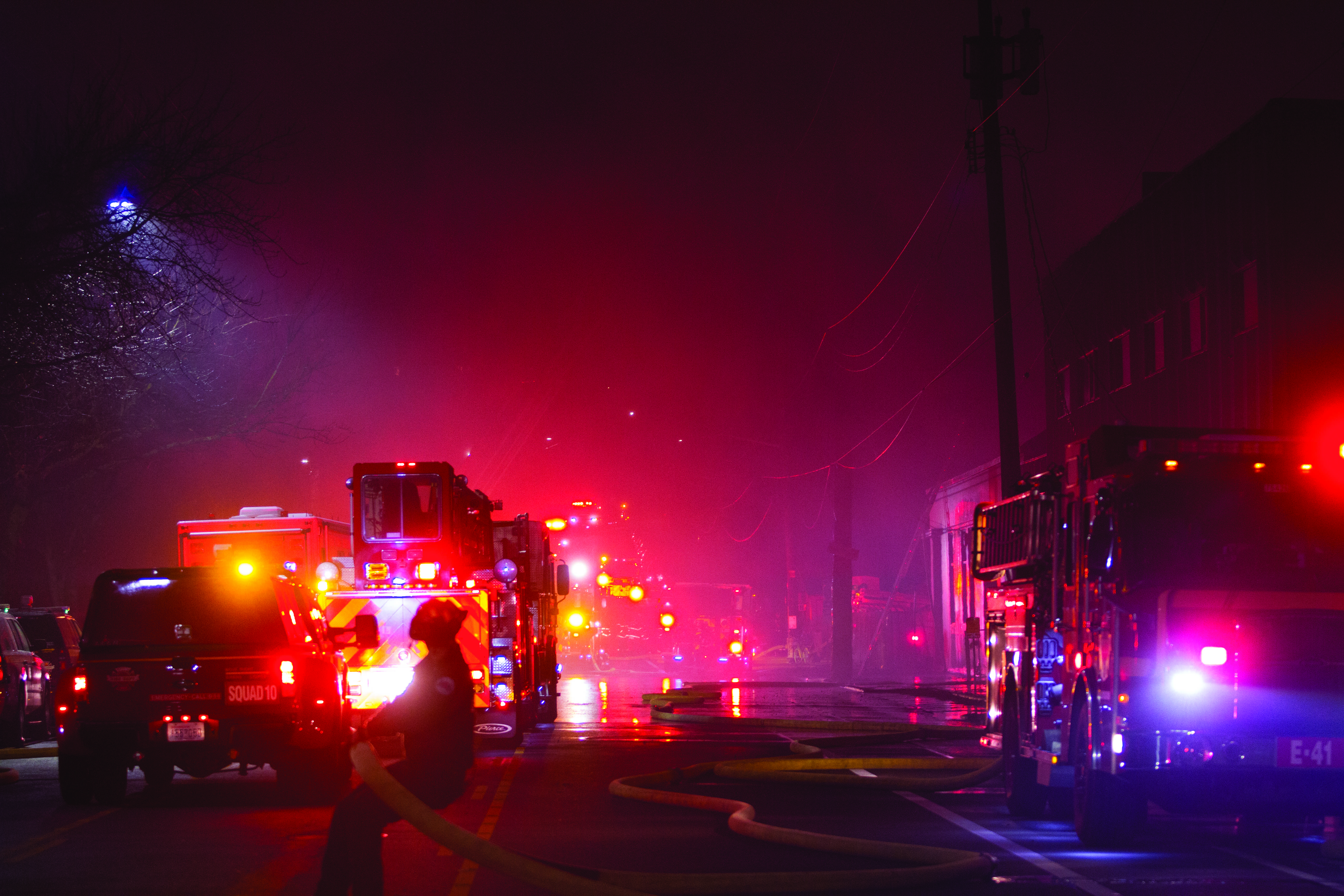
While the fire was no longer large or threatening, it was certainly persistent: on Tuesday, November 13th, the site was still visibly smoking.
Tinsley reports that, as of Tuesday morning, there are still firefighters on scene actively combatting the fire’s remains.
“As far as clean up goes, we have had a couple of fire engines on site through this morning working to extinguish hot spots. There are still some smoldering fires” Tinsley wrote in an email to the Falcon.
There were no injuries reported from the fire, on campus or otherwise, and all campus buildings remain unharmed.















































































